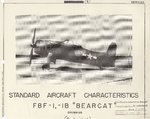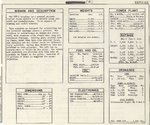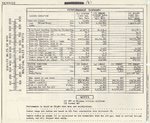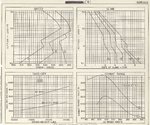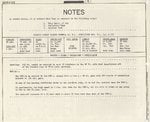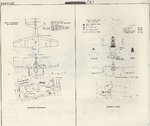papashteve
Recruit
- 9
- Oct 16, 2013
Hate to "necro" this thread but I have some info that could very much explain the F8F world record climb rate. I am going to copy/paste what I wrote in another thread I started on this forum (it was not getting much attention and this info is much more relevant here):
I recently received the official USN "SAC" for the F8F-1 Bearcat from the National Naval Aviation Museum and to my knowledge this document has never been made public on the internet. The performance figures are very high, much higher then any other previous figures I have seen for this aircraft. Here are some figures:
The performance listed is using 100/130 octane:
F8F-1: Weight (combat) - 9,672 pounds (bomb racks rocket launchers are assumed to be aboard)
Combat power (water injection):
BHP at SL - 2750 @ 2800 RPM
Rate of Climb SL: 5610 ft/minute
Time to climb: 20000 ft - 4.9 minutes
Max Speed at SL (combat power) - 366 Knots (677 kph)
Max Speed at alt (18800 ft.) - 372 Knots (688 kph).
Relevant pages/snippets from the document (highlighted):



Performance curves at combat loading and combat power are marked with the number (2). Military power curves marked with number (4). Normal power curves marked with number (5).
The combat curves seem to be showing an RPM of 3000 at SL and then shifting to 2600 RPM - along with top speed decreasing right past SL rather then slowly increasing as altitude is gained until the second stage of the supercharger (rather odd, haven't seen this in other ww2 speed charts before?). This seems to contradict the power plant ratings on the first page posted above, not to mention the R-2800-34W shouldn't be running past its limit of 2800 RPM.
Am I reading the curves incorrectly? Can anyone explain the curves in detail?
I recently received the official USN "SAC" for the F8F-1 Bearcat from the National Naval Aviation Museum and to my knowledge this document has never been made public on the internet. The performance figures are very high, much higher then any other previous figures I have seen for this aircraft. Here are some figures:
The performance listed is using 100/130 octane:
F8F-1: Weight (combat) - 9,672 pounds (bomb racks rocket launchers are assumed to be aboard)
Combat power (water injection):
BHP at SL - 2750 @ 2800 RPM
Rate of Climb SL: 5610 ft/minute
Time to climb: 20000 ft - 4.9 minutes
Max Speed at SL (combat power) - 366 Knots (677 kph)
Max Speed at alt (18800 ft.) - 372 Knots (688 kph).
Relevant pages/snippets from the document (highlighted):
Performance curves at combat loading and combat power are marked with the number (2). Military power curves marked with number (4). Normal power curves marked with number (5).
The combat curves seem to be showing an RPM of 3000 at SL and then shifting to 2600 RPM - along with top speed decreasing right past SL rather then slowly increasing as altitude is gained until the second stage of the supercharger (rather odd, haven't seen this in other ww2 speed charts before?). This seems to contradict the power plant ratings on the first page posted above, not to mention the R-2800-34W shouldn't be running past its limit of 2800 RPM.
Am I reading the curves incorrectly? Can anyone explain the curves in detail?
Last edited:

